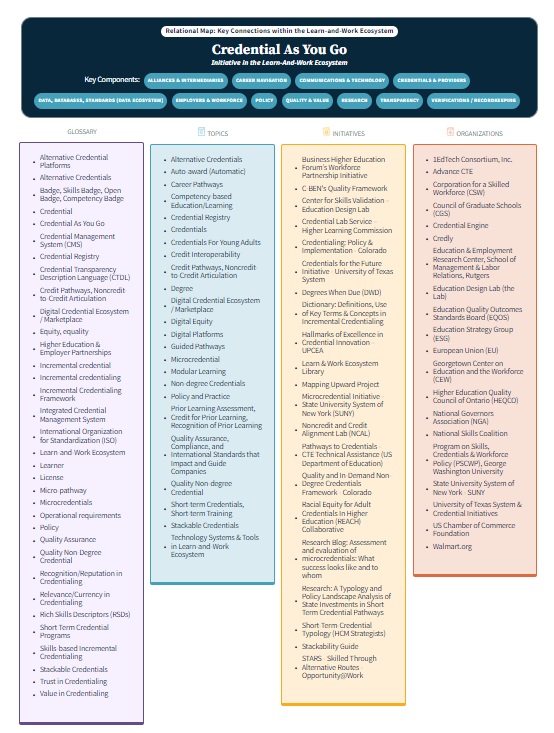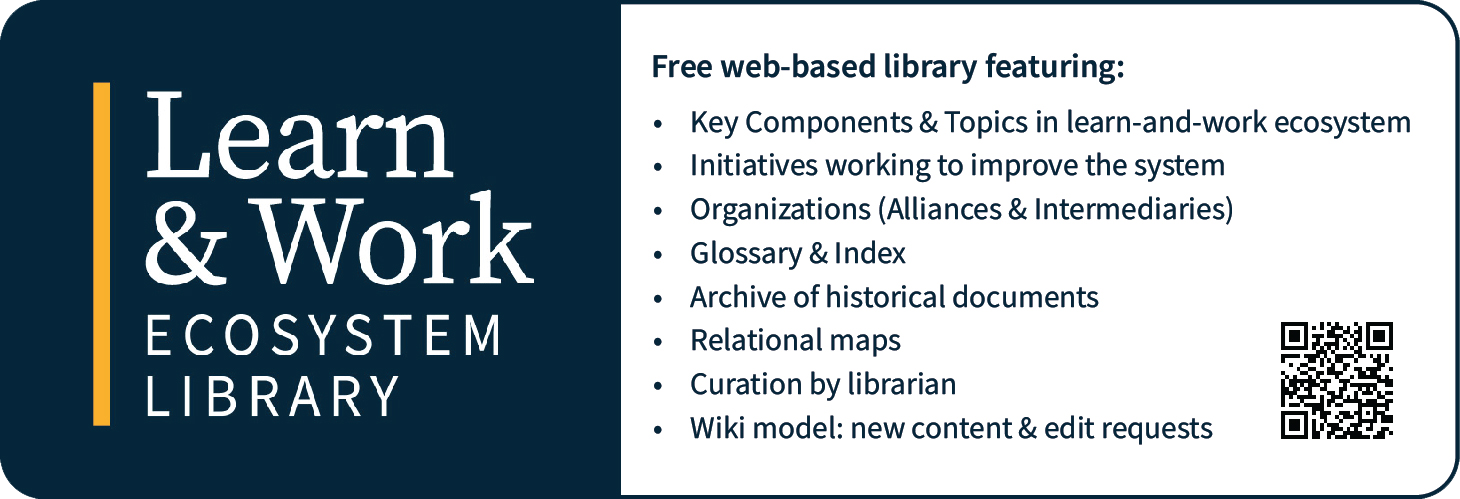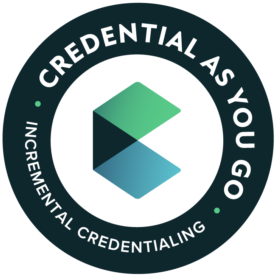Learn-and-Work Ecosystem
Ecosystem
Learn-and-Work Ecosystem
The learn-and-work ecosystem is a connected system of formal and informal learning (education and training) and work. The ecosystem is composed of many building blocks. When all the building blocks are working together, individuals can move more seamlessly through the marketplace using a variety of credentials to communicate the skills and knowledge acquired in multiple settings (e.g., school, work, service, self-study). Employers have more detailed and externally validated information during their hiring and upskilling processes. Schools are better able to count learning obtained outside of academic settings toward a degree or other credential. And the public is informed about our learn-and-work ecosystem. For the ecosystem to function effectively, all parts of the system must be connected and coordinated.
Library
Learn & Work Ecosystem Library
The Learn & Work Ecosystem Library was developed side-by-side to Credential As You Go as a companion and complementary effort. The mission of the Library is to make learn-and-work ecosystem information easier to find, use, and maximize for diverse stakeholders. The Library is an open-source, free and searchable website for information.
Built on research conducted to build the Library, the Library organizes its searchable information around 12 key components (building blocks) identified to comprise the learn-and-work ecosystem:
• Career Navigation
• Communications & Technology
• Credentials & Providers (Higher Education fits in this category)
• Data, Databases, Standards (Data Ecosystem)
• Employers & Workforce
• International Developments
• Organizations (Alliances/Intermediaries)
• Policy
• Quality & Value
• Research
• Transparency
• Verifications/Recordkeeping
The Library informs users about the learn-and-work ecosystem with many types of content and functions:
1. GLOSSARY of terms used in the learn-and-work ecosystem.
2. INDEX of all artefacts at the Library to expedite searches.
3. KEY COMPONENTS and SUB-COMPONENT TOPICS in the ecosystem, including links to other websites and resources for further information.
4. KEY INITIATIVES working in these areas, to improve aspects of the ecosystem.
5. ORGANIZATIONS working in the learn-and-work ecosystem
6. ARCHIVE of historical documents and websites.
7. CURATION by a librarian.
8. WIKI MODEL to enable the community to request new content and request editing for current content.




